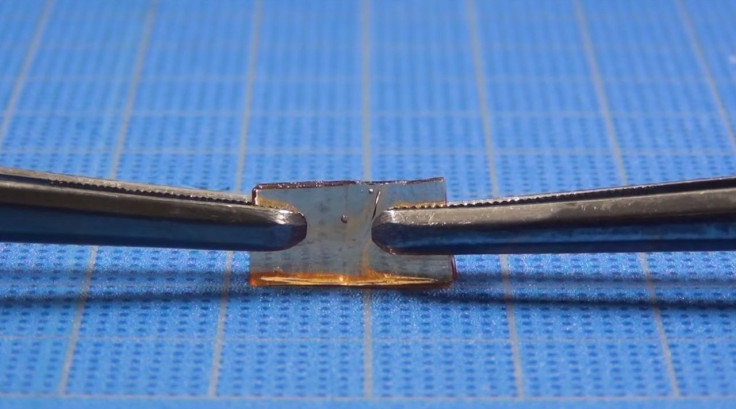New Self-Healing Material Could Save Smartphone Screens From Constantly Breaking

Scientists accidentally invented a glass-like substance that can heal itself when someone pushes on it, offering a potential new material from which to build smartphone screens, windshields and other things prone to breaking.
They created a polymer called polyether-thioureas that has similarities to materials like glass and acrylic in its transparency, consistency and strength. But unlike those well-known substances, a break in the polymer is not permanent: The material never crystallizes because of its special hydrogen bonds, so simply pushing the pieces together allows the hydrogen inside to form bonds with what’s in front of them at the time — without the material being sticky.
“The fractured portions … rejoin readily upon compression,” the scientists wrote in their study, in the journal Science.
Polymers like this new one could contribute to longer-lasting products.
“Expanding the range of healable materials is an important challenge for sustainable societies,” according the researchers, who are from Tokyo. “These materials are highly robust mechanically yet can readily be repaired by compression at fractured surfaces.”
The new polymer differs from other previously created healing materials in that it is hard and does not need high temperatures, only a little pressure, to be fixed when it breaks. It is also strong.
Just a small tile of healed polyether-thioureas can hold about the weight of a soda can, according to Science Magazine. “In the future this rigid polymer could be used to make robots and other technology that could be easily repaired.”
It takes about 30 seconds to get the material back to a decent strength, according to a report on the research. But if someone has a little time to kill, pushing together the broken pieces for a couple hours will let the hydrogen form into stronger bonds, reaching its pre-breakage toughness and stability.
Polyether-thioureas is semi-transparent now, and the researchers are working to make it moreso.
For many people, the material might be immediately associated with phone screens, as those are frequently broken and need expensive repairs.
There have been other advancements in that direction, Engadget noted, including screen protectors with healing properties.
© Copyright IBTimes 2024. All rights reserved.











